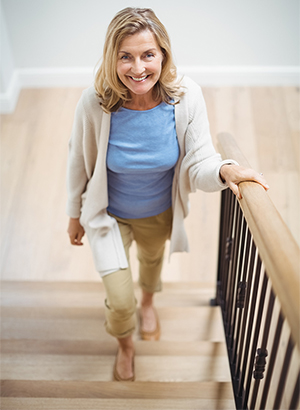 Did you know that falls are the #1 cause of injuries among the elderly in the United States and they mostly occur at home? Nearly a third of US seniors fall every year sustaining serious injuries such as hip fractures. Hip fractures are the most common operative fractures treated by orthopaedic surgeons. The estimated lifetime risk of hip fracture has been estimated to be 16% for women and 6% for men. Even if there is no significant physical injury, a fall can have a mental impact and prevent you from doing the things you enjoy for fear of falling again.
Did you know that falls are the #1 cause of injuries among the elderly in the United States and they mostly occur at home? Nearly a third of US seniors fall every year sustaining serious injuries such as hip fractures. Hip fractures are the most common operative fractures treated by orthopaedic surgeons. The estimated lifetime risk of hip fracture has been estimated to be 16% for women and 6% for men. Even if there is no significant physical injury, a fall can have a mental impact and prevent you from doing the things you enjoy for fear of falling again.
Here are 8 ways to prevent falls in your home:
- Repair tripping hazards: Repair wooden floorboards that are sticking up and replace slippery rugs or loose carpets. Ensure there are no electrical cords lying along walkways.
- Light up your living space: Keeping your home brightly lit will prevent you from falling over objects that are difficult to see. Use bright lights for stairs and narrow hallways. Place a lamp near your bed in case you need to get up in the middle of night to go to the bathroom.
- Wear comfortable, well-fitting shoes: Wearing flip-flops, shoes with slick soles, and high-heeled shoes, or walking in your stockings or socks can increase your risk of falling. Consider switching to sturdy shoes that have nonskid soles.
- Store items you use every day in places that are easily accessible: Store dishes, clothes, and other essential items in cabinets or shelves that are easy to reach.
- Use assistive devices: These include handrails along both sides of the stairways, grab bars for the tub or shower, nonslip rugs for the bathroom, and a plastic chair you can sit down on while showering.
- Clear up clutter: Immediately clean up any spilt food or liquid. Arrange coffee tables, boxes, magazine racks, or plant stands in places where they are least likely to cause falls.
- Exercise regularly: Keeping fit and active with regular exercise and balance training will keep your muscles and joints strong and reduce the risk of falls.
- Get a routine health & physical at least once a year: A complete checkup will be able to detect any problems with vision, bone health, or other conditions that might interfere with your balance. You should also discuss with your doctor any regular medications you are on that might cause dizziness or other side effects which could increase your risks of falls and seek a suitable alternative medication.
These simple measures can easily be implemented and will go a long way to making your home safe and hazard free.








